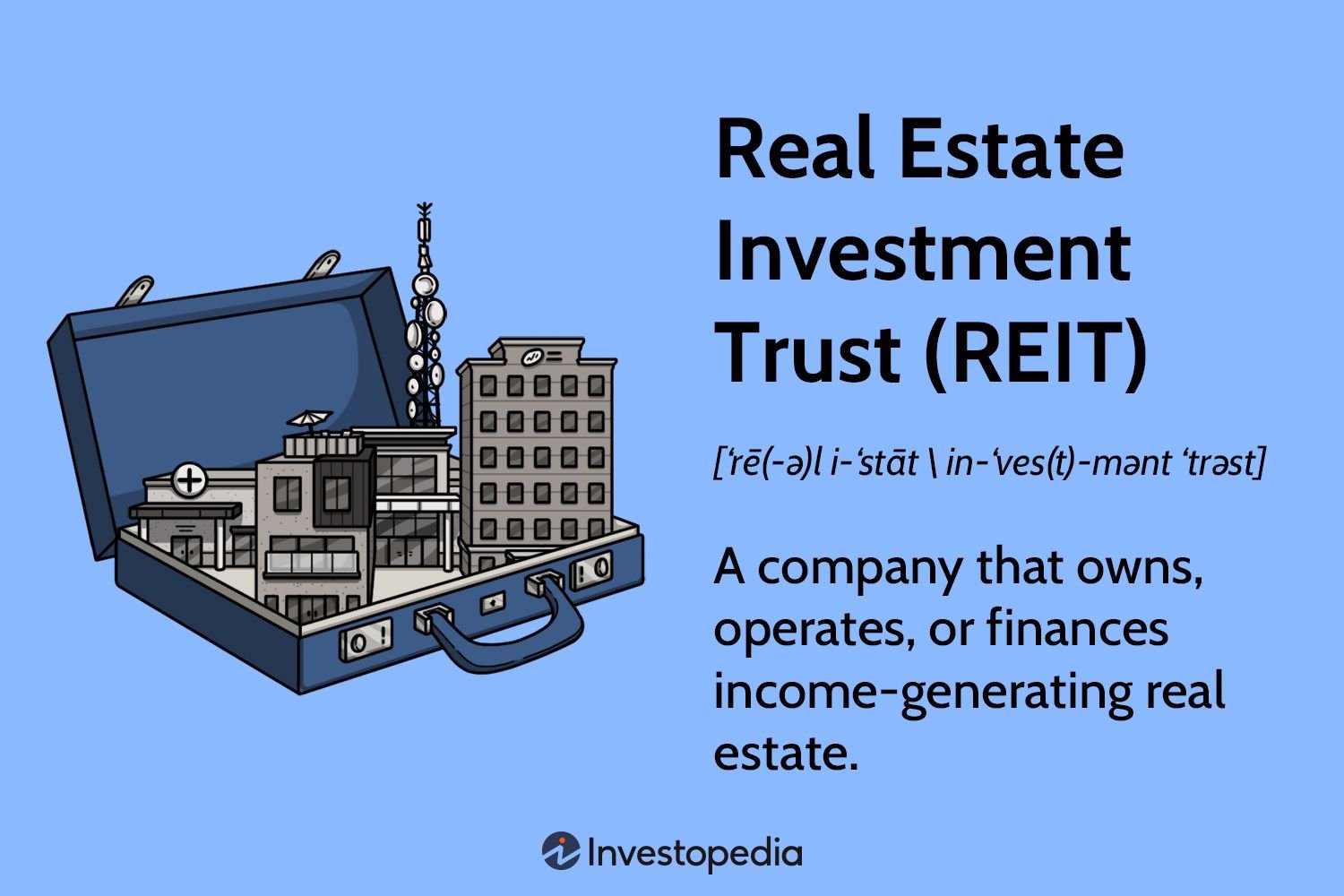Are you interested in investing in real estate but don’t have the time or capital to buy and manage properties yourself? Look no further! Investing in real estate with a Real Estate Investment Trust (REIT) might just be the solution you’ve been searching for. With a REIT, you can gain exposure to the real estate market and start earning passive income without the hassle of direct property ownership. In this article, we’ll guide you through the process of how to invest in real estate with a REIT, so let’s dive right in!
How to Invest in Real Estate with a REIT
Investing in real estate has long been considered a lucrative and reliable way to build wealth. However, traditional real estate investment can often be complex, time-consuming, and require significant capital. This is where Real Estate Investment Trusts (REITs) come in. REITs offer a convenient and accessible way for individuals to invest in real estate without the hassle of owning and managing physical properties. In this comprehensive guide, we will explore how you can invest in real estate with a REIT and maximize your returns.
What is a REIT?
Before diving into the details of investing in real estate with a REIT, it’s important to understand what a REIT is. A REIT is a company that owns, operates, or finances income-generating real estate. It pools capital from multiple investors and uses that money to invest in a diversified portfolio of properties, such as office buildings, apartments, hotels, shopping centers, and more. REITs are required by law to distribute a significant portion of their income as dividends to shareholders, making them an attractive investment option for those seeking regular income.
The Advantages of Investing in a REIT
Investing in a REIT offers a range of advantages compared to traditional real estate investment. Here are some key benefits:
1. Diversification: REITs provide investors with exposure to a diversified portfolio of properties across various sectors and geographic locations. This helps to mitigate risks associated with investing in a single property or location.
2. Liquidity: Unlike physical real estate, which can be challenging to sell quickly, REITs are listed on public exchanges, allowing investors to buy and sell their shares easily.
3. Professional Management: REITs are run by experienced real estate professionals who handle the day-to-day operations, property management, and tenant relationships. This eliminates the need for investors to deal with the complexities of property ownership.
4. Passive Income: REITs are required to distribute a significant portion of their income to shareholders in the form of dividends. This regular income can be an attractive feature for investors seeking passive income streams.
Types of REITs
REITs can be categorized into different types based on the nature of their investments. Here are the primary types of REITs:
1. Equity REITs: These REITs own and operate income-generating properties. They generate revenue by collecting rents from tenants and may also benefit from property appreciation.
2. Mortgage REITs: Mortgage REITs invest in real estate debt, such as mortgages or mortgage-backed securities. They earn income from the interest payments on the loans they provide.
3. Hybrid REITs: As the name suggests, hybrid REITs combine elements of both equity and mortgage REITs. They invest in both properties and real estate loans, providing a balanced investment option.
How to Invest in a REIT
Now that you understand the basics of REITs let’s explore the steps involved in investing in a REIT:
1. Determine Your Investment Goals and Risk Tolerance
Before investing in a REIT, it’s important to define your investment goals and assess your risk tolerance. Consider factors such as the desired level of income, the potential for capital appreciation, and the time horizon for your investment.
2. Research Different REITs
Not all REITs are created equal, so it’s crucial to research and evaluate different REITs to find the ones that align with your investment goals. Consider factors such as the quality and location of the properties in the REIT’s portfolio, the track record of the management team, and the overall financial health of the REIT.
3. Evaluate the Financials
Carefully review the financial statements and performance metrics of the REIT, including its net operating income, funds from operations (FFO), dividend history, and debt levels. This analysis will help you assess the financial stability and potential return on investment of the REIT.
4. Understand the Distribution Policy
Each REIT has its own distribution policy, which determines the frequency and amount of dividends paid to shareholders. Make sure you understand how the distribution policy works and assess whether it aligns with your income requirements.
5. Consider the Fees and Expenses
REITs often charge management fees and other expenses that can affect your overall returns. Evaluate the fee structure of the REIT and compare it to similar options in the market to ensure you are getting a fair deal.
6. Open a Brokerage Account
To invest in a REIT, you will need to open a brokerage account with a reputable brokerage firm. Research different brokerage options and choose one that offers competitive fees, a user-friendly platform, and a wide range of investment options.
7. Make Your Investment
Once you have selected a REIT and set up your brokerage account, you can proceed to invest in the REIT. Determine the amount you want to invest and place an order to purchase the REIT’s shares through your brokerage account.
8. Monitor Your Investment
After investing in a REIT, it’s important to regularly monitor your investment and stay updated on the performance of the REIT. Keep an eye on the financial reports, news, and any material changes that may impact your investment.
Managing Your Real Estate Portfolio with REITs
Investing in a single REIT may provide exposure to a diversified portfolio of properties, but you can further diversify and optimize your real estate portfolio by investing in multiple REITs. Here are a few strategies to consider when managing your real estate portfolio with REITs:
- Asset Allocation: Allocate your investments across different types of REITs, sectors, and geographic locations to spread the risk and capture potential growth opportunities.
- Rebalancing: Regularly review your portfolio and rebalance your investments to maintain the desired asset allocation and adjust for changes in market conditions.
- Dividend Reinvestment: Consider reinvesting the dividends received from your REIT investments to compound your returns over time.
- Staying Informed: Stay updated on the real estate market trends, economic indicators, and any regulatory changes that may impact REIT investments.
Investing in real estate with a REIT can be an excellent way to diversify your investment portfolio and gain exposure to the real estate market without the challenges of property ownership. By following the steps outlined in this guide, conducting thorough research, and carefully managing your investments, you can maximize your returns and build long-term wealth through REIT investing.
Remember, it’s essential to consult with a financial advisor or investment professional before making any investment decisions to ensure they align with your specific financial goals and risk tolerance.
Disclaimer: The information provided in this article is for educational purposes only and should not be taken as financial advice. Always do your own research before investing in any financial products or services.
How a REIT (Real Estate Investment Trust) Works! Explained.
Frequently Asked Questions
Frequently Asked Questions (FAQs)
What is a REIT? How does it work?
A REIT, or Real Estate Investment Trust, is a company that owns, operates, or finances income-generating real estate. By pooling investors’ money, REITs offer individuals the opportunity to invest in real estate without directly owning the properties. They generate income through rental properties, mortgages, or other real estate investments, and distribute a significant portion of their profits to shareholders as dividends.
Are REITs a good option for investing in real estate?
Yes, REITs can be a great option for investing in real estate. They provide investors with exposure to a diversified portfolio of properties without the need for a large initial investment or the hassle of property management. Additionally, REITs are required by law to distribute a significant portion of their income to shareholders, making them a potential source of regular income.
How do I invest in real estate with a REIT?
To invest in real estate with a REIT, you can follow these steps:
- Research and choose a REIT: Look for a REIT that aligns with your investment goals, risk tolerance, and desired type of real estate exposure.
- Open a brokerage account: Select a reputable brokerage firm that offers access to REIT investments.
- Fund your account: Deposit the necessary funds into your brokerage account.
- Purchase REIT shares: Use your brokerage account to buy shares of the chosen REIT.
- Monitor and manage your investment: Stay updated on the performance of the REIT and make any necessary adjustments to your portfolio.
What are the advantages of investing in a REIT?
Investing in a REIT offers several advantages, including:
- Diversification: REITs own a variety of properties, which helps spread the risk.
- Liquidity: REIT shares can be easily bought or sold on major stock exchanges.
- Professional management: REITs are managed by experienced professionals, saving you the effort of property management.
- Regular income: REITs are required to distribute a significant portion of their income as dividends.
What are the risks associated with investing in a REIT?
While investing in a REIT can be beneficial, there are risks to consider:
- Market fluctuations: The value of REIT shares can be influenced by economic and real estate market conditions.
- Interest rate risk: Changes in interest rates can impact the cost of financing for REITs.
- Specific industry risks: Certain types of REITs, such as those specializing in retail or hospitality, may be subject to specific industry risks.
- Management risk: Poor management decisions can negatively affect the performance of a REIT.
Can I invest in a REIT through my retirement account?
Yes, it is possible to invest in a REIT through certain retirement accounts, such as traditional IRAs, Roth IRAs, or self-directed IRAs. However, it is important to consult with a financial advisor or tax professional to understand the specific rules and implications for your particular retirement account.
Are there different types of REITs?
Yes, there are different types of REITs that focus on various sectors of the real estate market. Some common types include:
- Residential REITs: These invest in rental apartment buildings and residential properties.
- Commercial REITs: These invest in office buildings, shopping centers, and other commercial properties.
- Industrial REITs: These invest in warehouses, distribution centers, and industrial properties.
- Healthcare REITs: These invest in healthcare-related properties, such as hospitals, medical offices, and senior living facilities.
Can I lose money investing in a REIT?
As with any investment, there is a potential for loss. The value of REIT shares can fluctuate based on market conditions and other factors. It is important to carefully consider your investment goals, risk tolerance, and conduct thorough research before investing in a REIT or any other investment.
Final Thoughts
Investing in real estate with a REIT can be a lucrative and hassle-free way to enter the real estate market. By purchasing shares in a REIT, investors gain exposure to a diversified portfolio of real estate assets. This allows for a more affordable entry into the market, as well as the ability to easily buy and sell shares. With a REIT, investors can enjoy the benefits of real estate ownership, such as steady income and potential capital appreciation, without the need to handle property management or maintenance. To invest in real estate with a REIT, individuals can research and choose a suitable REIT, evaluate its performance and management, and purchase shares through a brokerage account. By following these steps, anyone can take advantage of the opportunities offered by investing in real estate with a REIT.


